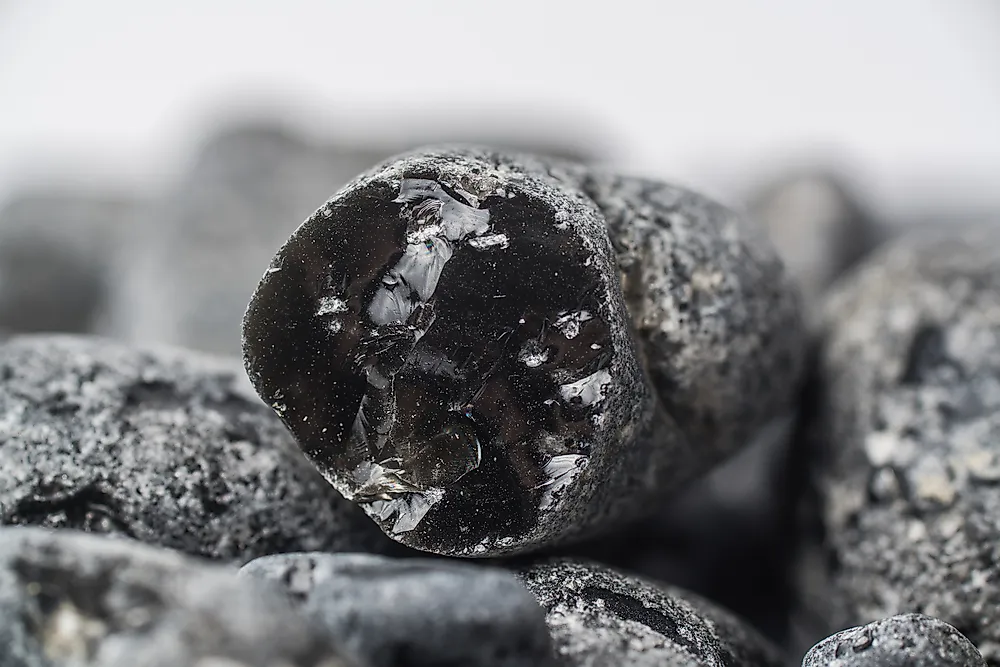Obsidian Facts: Geology of the World

Obsidians are naturally occurring amorphous products of fast cooling magma. They are formed when felsic lava cools quickly with minimum to no crystal growth. Obsidians are volcanic glasses referred to as mineraloids. They are found on the obsidian flows where the high quantities of silica induce a high degree of polymerization and viscosity of the lava that inhibits crystal growth.
5. Description
Obsidians are brittle and hard volcanic glasses which break with distinctive conchoidal fractures. The curved smooth fractures are formed due to the lack of mineral crystal in the obsidian. Obsidians were used to produce piercing and cutting tools during the stone ages. It is not a true mineral since it’s not a crystalline solid therefore it’s classified as a mineraloid. Obsidians are black although their color varies depending on the presence of inclusions or trace elements. The transition elements can give them brown, green or tan color. They are made up of over 70% silicon dioxide. Obsidians can break down into some fine-grained mineral crystals with time since it is metastable. The presence of water on the earth’s surface hastens the break down process of the obsidian.
4. Location
Obsidians are found in places that have experienced recent volcanic activities. Older obsidians are rare since they are altered or destroyed by heat or weathering. They can be found in the United States, Turkey, Scotland, New Zealand, Mexico, Japan, Kenya, El Salvador, Canada, Australia, Armenia, and Argentina. Obsidian flows that can be hiked are in the Calderas of Lake Medicine Volcano and Newberry Volcano. They can also be located in the eastern US states of North Carolina, Pennsylvania, and Virginia.
3. Formation
Obsidians forms when the felsic lava cools at the edges of a volcanic dome or felsic lava flow. It is also formed when lava cools once it comes into contact with air or water. Intrusive creation of obsidians occurs when the lava cools beside the dyke’s edge. Tektites were previously believed to be obsidians formed by the eruption of lunar eruptions.
2. Uses
The first evidence of human beings using obsidian was found in Kariandusi and numerous other Acheulian age sites that date back to 700,000 BCE. The Stone Age cultures valued obsidians since they could be fractured to make arrowheads or sharp blades. Obsidians were broken and polished to create the early mirrors. It was used to make scrapers, spear points, arrowheads, and knives among other tools and weapons. Currently, they used for ornamental purposes, and as a popular stone, it’s often cut into cabochons and beads. It can be used to make cutting edges which are sharper and thinner than surgical steel. An obsidian blade is a glass knife built using the naturally occurring material. Numerous surgeons also use obsidian blades as scalpel blades.
1. Production
Obsidians are mined in numerous parts of the world for its various unique properties. There are various obsidian mines in South and North America like the Middle-Fork Davis Creek, Rainbow, Needles, and Pink Lady mines in the United States. Rainbow obsidians are mined from the Middle-Fork Davis Creek and Rainbow mines. These mines provide tours of their facilities to the visitors.











